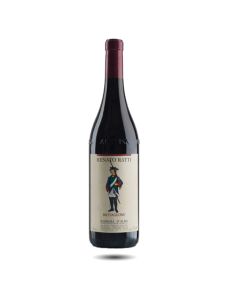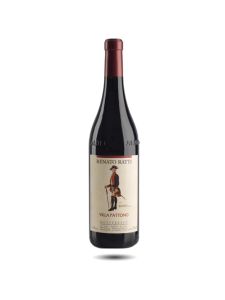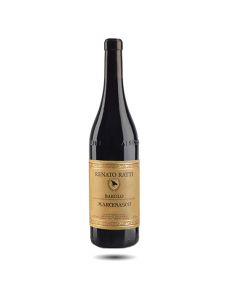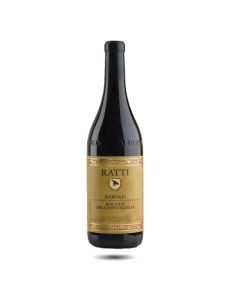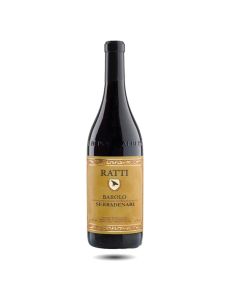We use cookies to make your experience better. To comply with the new e-Privacy directive, we need to ask for your consent to set the cookies. Learn more.
Renato Ratti

The Finesse of La Morra
At the beginning of my career in the wine business, I worked for an importer of fine Italian wines in America. It was a heady time; thanks to the numerous Italian immigrants, the USA was full of great Italian restaurants, delis and trattoria. Used to drinking Chianti in bulbous glass bottles with raffia around them, the impact of exciting new wines from Italy was enormous. It was the start of a long love affair for me, and no region impressed more than Piedmont. Fast forward more than thirty years and Piedmont has passed through several phases: from artisanal and rustic, through powerful and concentrated, to oaky and velvety, back to artisan but pure and natural. The heart of the Piedmont is the Langhe, an area of rolling hillside vineyards following the curves of the Tanaro river south of Alba; it is home of the Piedmont’s most famous wines named after local villages: Barolo and Barbaresco. Today, Piedmont is one of the most exciting regions in the wine world and its native grape, Nebbiolo, is prized for its fruit, its aromas and its smoky subtlety.
This is a land of rolling hills; of morning fogs (Nebbiolo takes its name from “Nebbia” the Italian word for fog); of contrasting climates from the icy winds of the snow-capped Alps to the warm influence from the Mediterranean Sea. The soils are rich clay at the bases and limestone on the summits of the hills. The wines are aged for approximately three years before release (five years for a riserva) and are very long lasting. In the past the wines were described as having flavours of “tars and roses”, but this much quoted description is barely valid today as the tannins have become more refined and the wines less coarse. Barbaresco wines tend to be lighter in colour and tannin than Barolo and more perfumed but again, this can vary more from the producer than the terroir. Two more red wines are worthy of mention: wines labelled simply as Nebbiolo come from declassified sites but are made in the same way as the two famous appellations and finally Barbera, a local grape producing joyous, juicy, lively red wines to drink young and fresh.
My first experience of Piedmont was via an elegant, impressive winemaker called Renato Ratti who brimmed with intelligence and enthusiasm. He had purchased an old Abbey in the hamlet of Annunziata in 1964 just below La Morra, renown today as one of the top villages of Barolo and admired for the fine, floral style of its wines. I learnt a great deal from Renato who was so cultivated and curious and who had embarked on a careful study and mapping out of the crus of the Langhe following visits to Burgundy. Today, these crus are universally recognized and adopted, but thirty years ago, they were quite controversial. Ratti was a visionary, forward thinking, courageous and universally liked. He introduced a professionalism that was lacking in the region and is credited for having defined what the two great appellations – Barolo and Barbaresco - were to become.
Very sadly, Renato died far too young at 54 and left his nephew and his 20-year-old son Pietro who had just finished enology school, in charge of the winery. Pietro had already felt the innovative influence of his father: his use of the “Albeisa” formed bottle to guarantee the origin; his use of stainless steel to better control fermentation temperatures and the introduction of a gentler bladder press at the end of the winemaking process. His insistence about elegance at a time when Piedmontese wines were rich and tannic marked the domain’s style. Over the years Pietro’s winemaking style has also become more refined: he is looking for delicacy, for silky texture and for purity. (Blind tasted, I have mistaken Ratti’s wines for Burgundy on at least two occasions (although Pietro gently reminds me that Barolo tannins are very different from Burgundian ones.). The wines are made with very gentle extraction and aged in a mixture of French barrels and larger Italian wooden casks, always in aged, never new oak. In 2005 a new winery – located on the mid-slope on the left as you drive up the hill to La Morra with its distinctive vegetation roof – was inaugurated.
I am delighted that we are beginning a collaboration with one of the best families of Piedmont, who have been friends of mine for a very long time. I admire Pietro’s vision and his attention to detail. You have probably already tasted Piedmontese wines before, but I encourage you to try the Ratti wines; their violet aromas and autumn fruit flavours, their elegance and their silky, long lasting structure fit exactly with the DNA of Thienpont Wines.
Just to give you a little information regarding the 2017, 2018 and 2019 vintages. The 2017 was a warm vintage and you will taste the round, ripe fruit in the Barolo Marcenasco, which still keeps its freshness and floral notes thanks to its La Morra location. The 2018 vintage is rather the opposite of 2017; it was much cooler, similar to 2016, and the wines are slightly lighter coloured, more floral and finer. 2019 is a top vintage which will be long lived and elegant. The weather was sunny but not too hot and the wines are already showing beautiful fruit flavours and silky, fresh tannins.
The Renato Ratti wines are labelled with pictures of soldiers from the historic Piedmontese regiments of the 18th century. Only the single vineyard sites, such as the Barolo Marcenasco have more traditional labels.
At the beginning of my career in the wine business, I worked for an importer of fine Italian wines in America. It was a heady time; thanks to the numerous Italian immigrants, the USA was full of great Italian restaurants, delis and trattoria. Used to drinking Chianti in bulbous glass bottles with raffia around them, the impact of exciting new wines from Italy was enormous. It was the start of a long love affair for me, and no region impressed more than Piedmont. Fast forward more than thirty years and Piedmont has passed through several phases: from artisanal and rustic, through powerful and concentrated, to oaky and velvety, back to artisan but pure and natural. The heart of the Piedmont is the Langhe, an area of rolling hillside vineyards following the curves of the Tanaro river south of Alba; it is home of the Piedmont’s most famous wines named after local villages: Barolo and Barbaresco. Today, Piedmont is one of the most exciting regions in the wine world and its native grape, Nebbiolo, is prized for its fruit, its aromas and its smoky subtlety.
This is a land of rolling hills; of morning fogs (Nebbiolo takes its name from “Nebbia” the Italian word for fog); of contrasting climates from the icy winds of the snow-capped Alps to the warm influence from the Mediterranean Sea. The soils are rich clay at the bases and limestone on the summits of the hills. The wines are aged for approximately three years before release (five years for a riserva) and are very long lasting. In the past the wines were described as having flavours of “tars and roses”, but this much quoted description is barely valid today as the tannins have become more refined and the wines less coarse. Barbaresco wines tend to be lighter in colour and tannin than Barolo and more perfumed but again, this can vary more from the producer than the terroir. Two more red wines are worthy of mention: wines labelled simply as Nebbiolo come from declassified sites but are made in the same way as the two famous appellations and finally Barbera, a local grape producing joyous, juicy, lively red wines to drink young and fresh.
My first experience of Piedmont was via an elegant, impressive winemaker called Renato Ratti who brimmed with intelligence and enthusiasm. He had purchased an old Abbey in the hamlet of Annunziata in 1964 just below La Morra, renown today as one of the top villages of Barolo and admired for the fine, floral style of its wines. I learnt a great deal from Renato who was so cultivated and curious and who had embarked on a careful study and mapping out of the crus of the Langhe following visits to Burgundy. Today, these crus are universally recognized and adopted, but thirty years ago, they were quite controversial. Ratti was a visionary, forward thinking, courageous and universally liked. He introduced a professionalism that was lacking in the region and is credited for having defined what the two great appellations – Barolo and Barbaresco - were to become.
Very sadly, Renato died far too young at 54 and left his nephew and his 20-year-old son Pietro who had just finished enology school, in charge of the winery. Pietro had already felt the innovative influence of his father: his use of the “Albeisa” formed bottle to guarantee the origin; his use of stainless steel to better control fermentation temperatures and the introduction of a gentler bladder press at the end of the winemaking process. His insistence about elegance at a time when Piedmontese wines were rich and tannic marked the domain’s style. Over the years Pietro’s winemaking style has also become more refined: he is looking for delicacy, for silky texture and for purity. (Blind tasted, I have mistaken Ratti’s wines for Burgundy on at least two occasions (although Pietro gently reminds me that Barolo tannins are very different from Burgundian ones.). The wines are made with very gentle extraction and aged in a mixture of French barrels and larger Italian wooden casks, always in aged, never new oak. In 2005 a new winery – located on the mid-slope on the left as you drive up the hill to La Morra with its distinctive vegetation roof – was inaugurated.
I am delighted that we are beginning a collaboration with one of the best families of Piedmont, who have been friends of mine for a very long time. I admire Pietro’s vision and his attention to detail. You have probably already tasted Piedmontese wines before, but I encourage you to try the Ratti wines; their violet aromas and autumn fruit flavours, their elegance and their silky, long lasting structure fit exactly with the DNA of Thienpont Wines.
Just to give you a little information regarding the 2017, 2018 and 2019 vintages. The 2017 was a warm vintage and you will taste the round, ripe fruit in the Barolo Marcenasco, which still keeps its freshness and floral notes thanks to its La Morra location. The 2018 vintage is rather the opposite of 2017; it was much cooler, similar to 2016, and the wines are slightly lighter coloured, more floral and finer. 2019 is a top vintage which will be long lived and elegant. The weather was sunny but not too hot and the wines are already showing beautiful fruit flavours and silky, fresh tannins.
The Renato Ratti wines are labelled with pictures of soldiers from the historic Piedmontese regiments of the 18th century. Only the single vineyard sites, such as the Barolo Marcenasco have more traditional labels.




